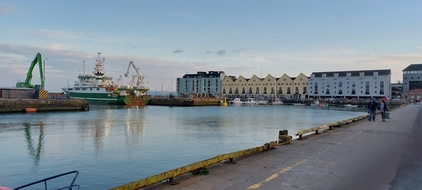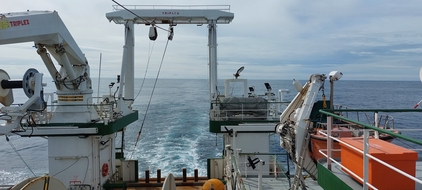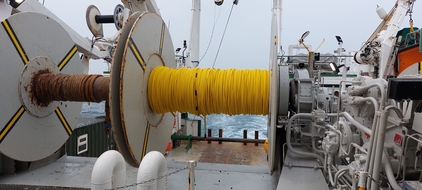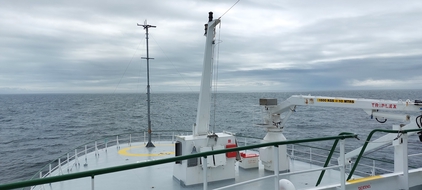Observing the Northeast Atlantic aboard the RV Celtic Explorer!
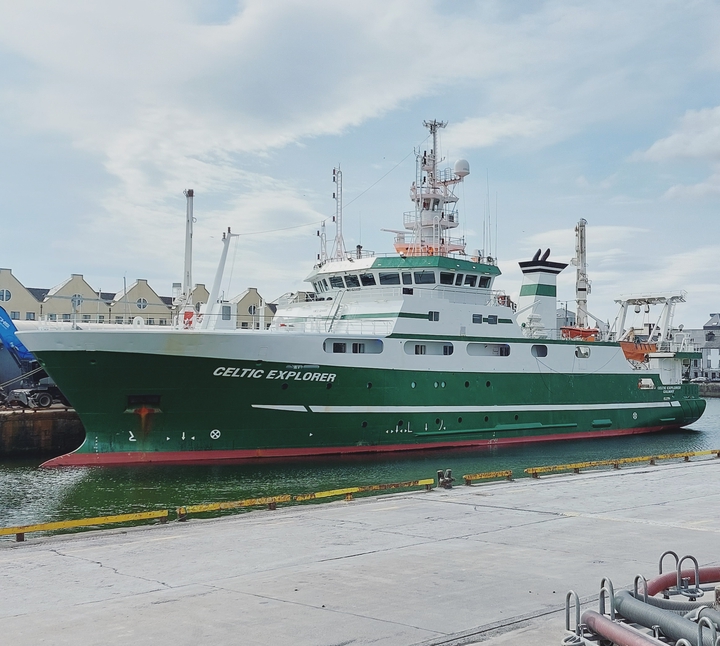 Image credit: Sam T. Diabaté
Image credit: Sam T. Diabaté
From April 24th to May 6th, I took part in the Marine Institute Ocean Climate Cruise 2022 aboard the Research Vessel Celtic Explorer. This 2-week research cruise led by Chief Scientist Dr. Caroline Cusack aimed to measure water properties in the Northeast Atlantic. To do so we sampled 40+ water depth profiles from Ireland to the southern Rockall Plateau. The campaign was very successful.
Since more than a decade, the Marine Institute has been conducting annual Ocean Climate Cruises along a route encompassing the Irish shelf and slope, the Porcupine Bank, the Rockall Trough and ending on the southern Rockall Plateau. This effort allows to monitor temporal changes in water properties such as temperature, salinity, oxygen levels, and flow speed. While satellite observations now play a crucial role in informing scientists about the ocean properties and flow at surface, in-situ measurements obtained thanks to oceanographic cruises remain vital to understand our planet climate, as they inform about the ocean interior.
On Saturday 23rd April and Sunday 24th April, scientists boarded RV Celtic Explorer in the Port of Galway and joined the crew already aboard. Later on the Sunday, we set sail and began what was my first ever research campaign at sea. Over the course of the following two weeks, we completed more than forty profiles following the historical route (MIOC# stations, see map below) and two additional transects: the North–South Porcupine Section and the Erris Head section (again, see map).
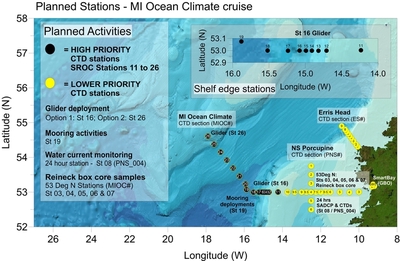
Niskin bottles are used to collect water at different depths. They are mounted on a cylindrical metallic frame (a rosette) which is lowered from the side of the ship down to the ocean floor with use of a large winch. The Niskin bottles allow scientists to measure dissolved oxygen levels as well as other chemical compounds and elements, abundance in phyto/zoo-plankton, metal contents, etc. The rosette is also fitted with a pumped Conductivity/Temperature/Depth (CTD) sensor (a MicroCAT). For this reason, we loosely call the process of lowering the rosette and sampling the water a CTD profile.
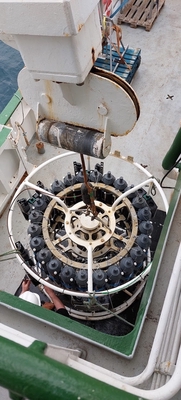
Aboard the RV Celtic Explorer, I was the CTD operator of the night shift team, meaning I was in charge of the PC from which data acquisition and Niskin bottle closure was controlled. I was in permanent radio contact with the winch driver and with the crew members working on deck, so that we could synchronise our actions. I was also in close contact with the bio-geo-chemist team lead (Dr. Janina V. Büscher), who would correspond to me depth levels of interest prior to each CTD profile.
M6 buoy successfully deployed from the #RVCelticExplorer this week during CE22008 annual climate monitoring survey 2022. @MarineInst @Eir_OOS pic.twitter.com/Z31jP0bxHy
— Marine Institute Research Vessels (@RVMarineInst) April 29, 2022
In addition to the CTD profiles, we also turned around the M6 subsurface mooring and the M6 weather buoy. Moorings (and buoys) are measurement arrays which permanently stay at sea and therefore need regular refitting. The above tweet feature a nice drone video shot when we dropped the M6 buoy anchor in the water.
Lastly, we frequently enjoyed the company of marine mammals. We saw a large pod of common dolphins, and several pods of pilot whales.
Further pictures of the ship can be found below. Image credit: Sam T. Diabaté. From top to bottom:
- Galway Port, with the RV Celtic Explorer in the entrance of the harbour prior to mobilisation,
- The ship aft-deck seen from outside the bridge deck,
- The ship aft-deck seen from outside the dry lab on the forecastle deck,
- The ship forecastle deck, from outside the bridge on the wheelhouse deck.
Sam
